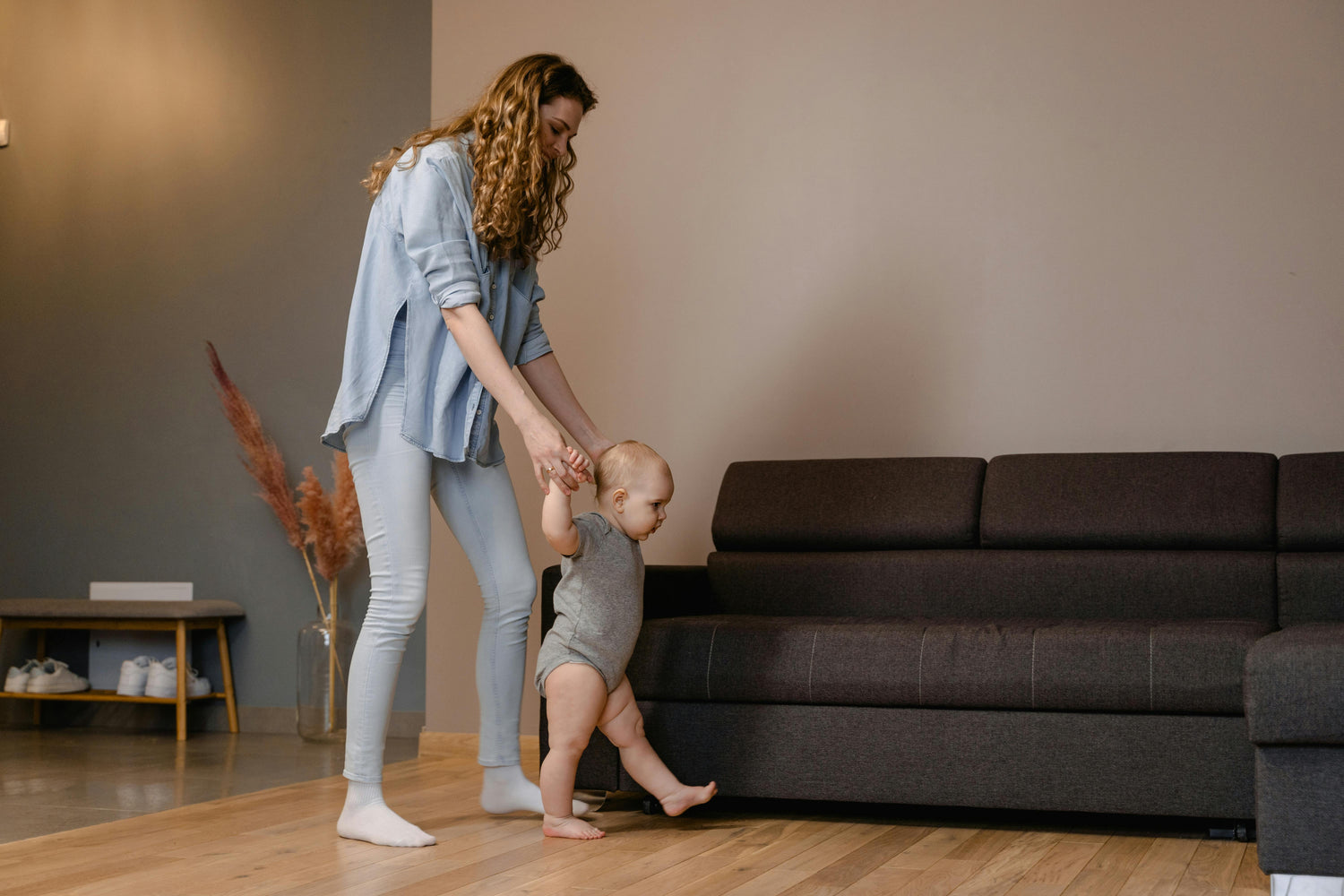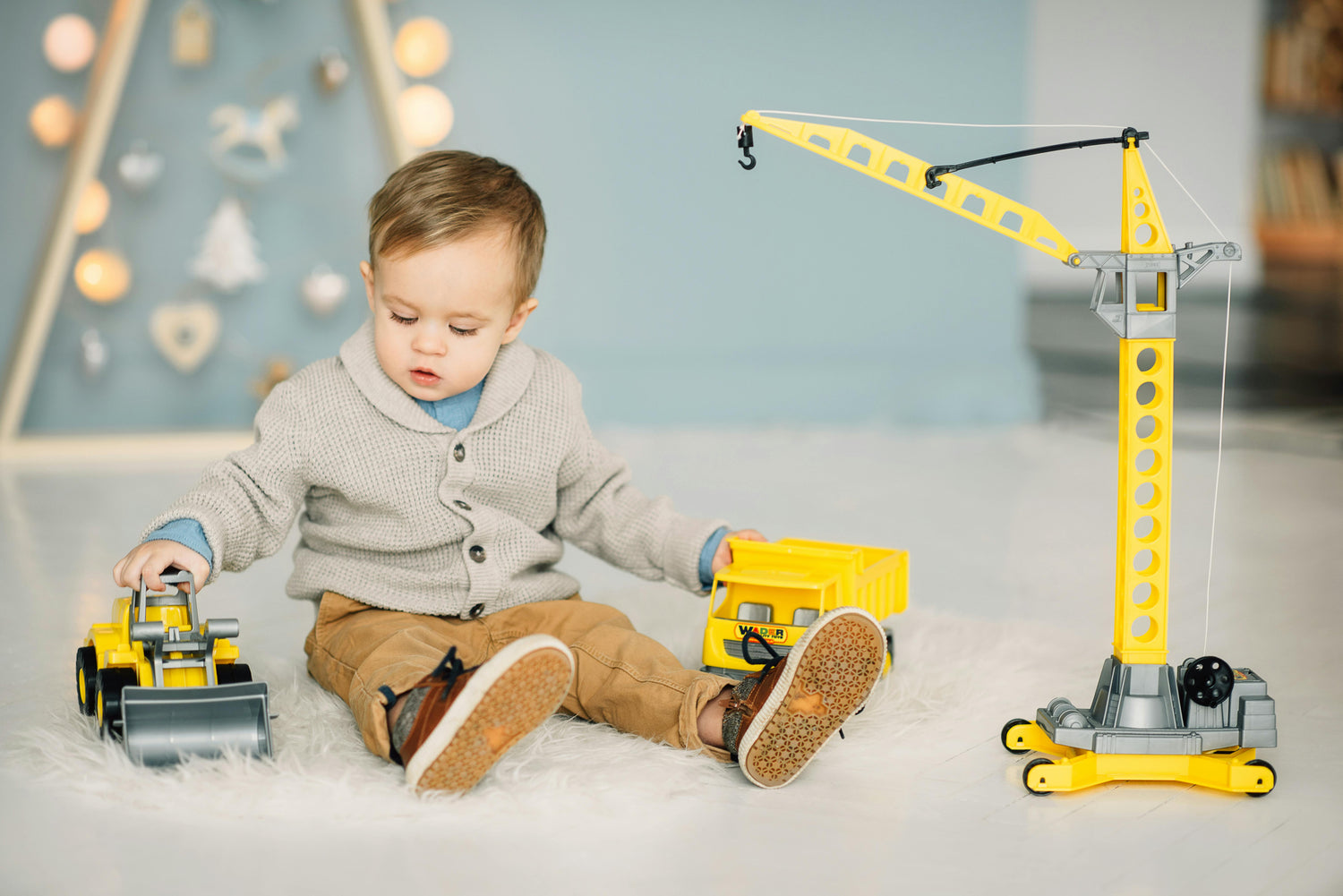ARCHAIC REFLEXES IN ADULTS
A FEW WEEKS OF EXERCISES TO SOLVE EVERYTHING
Clumsiness, frequent stiff necks, recurring falls, hyperstress, hypersensitivity, dyslexia, attention deficit disorder, impulsiveness, difficulty writing, ... what if you had a problem with your archaic reflexes? Often overlooked, they play a fundamental role in our development. Focus on their impact on our lives.
Written by Chloé Lesage - October 2024
Collapsible content
Reading time
About 10 minutes
ARCHAIC REFLEXES: FORGOTTEN KEYS TO PHYSICAL BALANCE
This post invites you to explore the impact of archaic reflexes on your physical and emotional well-being. Discover how these innate responses, inherited from early childhood, can influence your movement patterns, emotional reactions, and even your posture. By learning to identify and reintegrate these reflexes, you can restore balance to your body and regain a natural fluidity in your movements.
What if, starting today, you transformed these ancient reflexes into allies to improve your daily well-being and your yoga practice? Ready to discover the influence of archaic reflexes?
"Let's take a look"!

WHAT ARE ARCHAIC REFLEXES? THE HEALTHY FOUNDATION OF GOOD BALANCE
Archaic reflexes are involuntary and automatic movements of the central nervous system, present from birth, or even before, in utero. Their role is multiple: they ensure the survival of the infant, but also, and above all, they allow the establishment of neurological maturation and all the comfortable functions in adulthood.
Each early reflex plays a specific role in brain maturation and the development of motor and sensory functions. Take, for example, the sucking reflex: it allows infants to feed, but it also contributes to the coordination between breathing, swallowing, and sucking.
Another example is the grasping reflex, which helps strengthen the hand muscles, enabling us to crawl, then crawl and finally write comfortably.
A 10-year-old boy testified that he had consulted a dozen professionals who were unable to help him write. He thought his brain was broken, when in fact it was just unintegrated reflexes.
These reflexes, under normal circumstances, gradually disappear in the nervous system to make way for voluntary and controlled movements.
For my part, I had great difficulty feeling my body relax. In a state of perpetual vigilance, even though I practiced meditation and yoga regularly, I could only feel a little relaxation after 3 days of doing nothing. This is not really "profitable". I discovered that my Moro reflex was not integrated and I can finally feel the tensions in my body release.
So how can these reflexes, which seem harmless, cause problems in adulthood?

WHAT ARE THE CONSEQUENCES OF UNINTEGRATED REFLEXES? THE REPERCUSSIONS IN ADULT AGE (1-4)
There are several natural reflexes, such as hiccups, yawning, or the gag reflex. However, only 12 archaic reflexes are studied for their potential impact on adult life . If these archaic reflexes do not disappear or are not well integrated, they can manifest through the following physical, emotional, or social difficulties:
Hyperreactivity to stress : If the Moro reflex, which is the infant's startle response to loud stimuli of noise or light, is poorly integrated, it can cause hypersensitivity to noise, sudden movements, or stressful situations. Affected individuals may have difficulty relaxing, be prone to anxiety, and have a very low stress threshold. They are constantly in a state of vigilance or alert, leading to increased anxiety and difficulty relaxing. The persistence of this reflex also affects the management of emotions, leading to disproportionate responses during social interactions. This can also result in sleep disturbances, with frequent awakenings due to startles.
Attention and concentration problems : Certain archaic reflexes can affect the functioning of the frontal lobe, which is responsible for executive functions. This can manifest as attention problems, difficulty staying focused on a task, or a tendency toward impulsiveness.
Sensory Hypersensitivity : If the spinal Galant reflex is not properly integrated, it can make a person hypersensitive to touch or tight clothing. These adults may experience constant discomfort in their movements or have an aversion to certain textures or sensory stimuli.
The automatic righting and walking reflex allows infants to "walk" briefly when supported under the arms and their feet touch a flat surface. If this reflex is not integrated, adults may have difficulty maintaining an upright posture, often hunched over, with an awkward or irregular gait. This can also lead to balance problems, increasing the risk of falls. Chronic back, shoulder, and neck pain may develop. The body must constantly compensate to maintain balance, which causes fatigue more quickly. Finally, it can affect the ability to perform precise movements, such as running, jumping, or climbing stairs.

WHAT ARE THE CONSEQUENCES OF UNINTEGRATED REFLEXES? THE REPERCUSSIONS IN ADULT AGE (5-8)
The cardinal points reflex , or seeking reflex, causes the baby to turn its head toward the stimulus on its cheek. If this reflex is not integrated, it can cause difficulty chewing or swallowing properly (dysphagia) and make the person hypersensitive to certain food textures, creating an aversion to solid foods. Simple actions such as brushing teeth or wiping the mouth can become uncomfortable, and this reflex can lead to behaviors such as teeth grinding. It can also affect the coordination of oral muscles, making speech articulation less fluent. Orofacial hypersensitivity related to this reflex can also be distracting and make it difficult to concentrate on long-term tasks.
If the sucking reflex is not integrated, it can lead to feeding difficulties, such as problems chewing or swallowing properly. It can also affect the coordination between breathing, swallowing, and chewing. Incomplete integration of this reflex can also interfere with language development because it affects the coordination of oral muscles. Orthodontic problems can also manifest through poor positioning of the teeth or jaws.
If the grasp reflex is not integrated, it can lead to difficulties with fine motor skills, such as manipulating objects precisely or writing. People may have difficulty releasing their grip, which can affect daily activities such as grasping or handling tools. This persistent reflex can also cause muscle tension in the hands and forearms, leading to discomfort or chronic pain. It can also affect overall coordination, making it more difficult to acquire complex motor skills such as playing a musical instrument. Finally, posture problems can arise due to the accumulated tension in the muscles of the upper limbs. Without grasping, it is difficult to develop certain neural connections related to spatial perception and problem solving.
The swim reflex initially helps infants hold their breath while submerged. An adult with this reflex not integrated may be uncomfortable swimming or, more generally, lying down or submerged in water. If this reflex persists, it could also interfere with daily land-based activities, with unsmooth and uncoordinated breathing.

WHAT ARE THE CONSEQUENCES OF UNINTEGRATED REFLEXES? THE REPERCUSSIONS IN ADULT AGE (9-12)
Because the rooting reflex is linked to the search for food and comfort, its failure to integrate can lead to poor regulation of stress and anxiety, especially when sensory stimulation is directed at the face. In some cases, adults may engage in compulsive oral behaviors, such as chewing gum, objects, or fingernails.
The asymmetrical tonic neck reflex can cause tension in the neck and shoulder area, which can lead to frequent migraines and neck pain. In adults, this can manifest as difficulty following lines when reading or clumsy handwriting with poor hand-eye coordination. The asymmetrical tonic neck reflex is linked to the development of the frontal lobe, which is responsible for executive functions such as attention and concentration. If this reflex persists, it can lead to difficulty concentrating on complex tasks, organizing thoughts, and paying attention for long periods of time. Bilateral movements (involving both sides of the body) such as running, swimming, or even typing on a computer may become more difficult to perform smoothly and in sync.
People with an unintegrated glabellar reflex may experience hypersensitivity in the forehead and eyes. This can make activities such as applying makeup, washing their face, or even wearing glasses uncomfortable. If the glabellar reflex persists, excessive blinking may occur when the forehead is touched or even in response to simple stimuli, such as light or other visual or light tactile stimulation. This can be distracting in social interactions and daily activities.
An unintegrated plantar reflex in adults may indicate underlying neurological disorders, such as central nervous system damage. Symptoms include coordination problems, walking problems, foot pain, and plantar hypersensitivity.
Beyond physical symptoms, unintegrated archaic reflexes can have a significant impact on emotional management and our social relationships. Not being able to do as others do, either through incapacity or uncontrollable reactions, can affect our self-confidence, make us feel different or inadequate, and lead to socially awkward situations.
For example, an individual with a persistent Moro reflex may feel constantly on alert, which can make social interactions more complicated. This hypervigilance can lead to escape and avoidance behaviors, or difficulty handling conflicts calmly and rationally. Affected adults may also be more prone to disproportionate emotional responses, feel overwhelmed more easily, and have difficulty handling stressful situations calmly.

WHAT DOES AN UNINTEGRATED REFLEX MEAN? THEIR PERSISTENT INFLUENCE ON OUR BEHAVIOUR
Failure to integrate an archaic reflex means that this reflex, which is supposed to disappear during the first months of life, persists beyond the age when it should normally be inhibited by the central nervous system.
As the nervous system develops, it integrates and absorbs archaic reflexes and replaces them with more voluntary and controlled movements. These reflexes then become useless. They are therefore naturally inhibited by the brain, allowing more sophisticated movements to be mastered. It is through this essential condition that one can learn to read, write or even mathematics.
But if this process does not take place correctly, the reflex remains active and continues to influence the individual's behavior, posture, or motor and cognitive development, even in adulthood.

WHY ARE ARCHAIC REFLEXES DISRUPTED? THE CAUSES OF UNINTEGRATED ARCHAIC REFLEXES
When this process is disrupted, it can be due to a combination of physical, environmental, neurological, or emotional factors.
The first cause concerns anything related to incidents or enormous stresses that occur during gestation, birth, or childhood. For example, a premature baby did not have enough time to complete its neurological and physical development in the womb, which can slow down or disrupt the integration of reflexes. A birth with complications (long labor, cesarean section, use of forceps or vacuum extraction) can cause physical stress on the child's nervous system.
The second cause is related to the non-physiological practices that parents impose on their babies. If a baby is often kept in static positions, such as bouncers, this can limit their freedom of movement and, consequently, slow down the integration of reflexes that depend on motor development. Not allowing the child enough time to play on the floor from their earliest days limits the opportunities for reflex integration. Or, early overstimulation by parents when learning to walk can cause babies to skip intermediate stages of development, which are so essential to their development and future.
Some children may also have genetic predispositions or biological differences that affect their neurological development.

HOW TO REINTEGRATE YOUR REFLEXES? THE SOLUTION FOR ALL AGES
Fortunately, there are solutions to reintegrate these reflexes, whether at the infant, child or even adult stage.
Yoga is an excellent tool for helping your body, but it's not enough to fully integrate all of your archaic reflexes. Some reflexes may require targeted, specific exercises, usually provided by therapists specializing in archaic reflexes.
To identify persistent archaic reflexes, an assessment can be performed by specialized professionals near you. Always remember to check the seriousness of your practitioner's training.
Generally, a combination of easy exercises to do at home daily for a period of 3 weeks is enough to achieve radical improvements. Sometimes it is necessary to repeat an assessment to work on other reflexes in a complementary manner.
If you can also combine them with a regular yoga practice, this would probably be the best approach to maximize results.
It's fascinating to realize that sometimes some of our quests are down to simple little adjustments related to reflexes. Although they belong to our early childhood, archaic reflexes can ruin our lives if they are not properly integrated by affecting our posture, our stress management, our concentration, or even our social relationships. It is by better understanding these archaic mechanisms that we can restore greater harmony between our body and our mind. This is how we can free ourselves from unnecessary tension and develop our full potential.
Many thanks for your captivating and informative 6th article, Chloe!
Your insightful reflections allow us to better understand the importance of archaic reflexes and their impact on our daily lives.
Chloe's Bio
-

Chloé LESAGE
Leadership Coach and Project Facilitator
"A warrior at heart, that's often the conclusion I receive when I explain my life journey. After a difficult start on this earth, I sought inner balance and expansion through a 15-year journey of personal development where I tested all conventional and atypical practices.Since we never stop learning, I continually feed my thirst for understanding. High intellectual and emotional potential, I learned to put my abilities at the service of life so that it becomes a gift.
My method is at the junction between who I am, the reappropriation of my 2-year training in personal development coaching as well as all my life experiences.
It is a practice that puts into experience and intervenes, all at the same time, on the body, the emotions and the spiritual dimension. For me, it is out of the question to accompany for years what would cause, in my opinion, dependence. However, my work is to create the conditions for reappropriation of one's inner power to obtain immediate results in the materialization of one's objectives.
More information about his professional career
More articles from Chloe...
-

THE DUEL OF WORDS
DISCOVER THE ARTICLELearn how to transform verbal abuse into opportunities for understanding and compassion with practical, compassionate guidance.
-

TRANSFORM YOUR HYPERSENSITIVITY INTO A STRENGTH
DISCOVER THE ARTICLELearn how to transform your empathy into inner strength to better manage your emotions and live in harmony with your sensitivity.
-

LEARN TO ACHIEVE YOUR GOALS
DISCOVER THE ARTICLEDiscover how to make every step meaningful by setting realistic goals and turning obstacles into opportunities.
* Want to share a moment in your life that could inspire and touch the hearts of as many people as possible?
Pick up your pen and become our headliner starting next week!
The entire Yogaterrae team will be delighted to highlight your thoughts and experiences, which resonate at the heart of the Yogaterrae community, which has now become a true "partner" in shared success.





